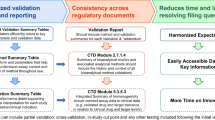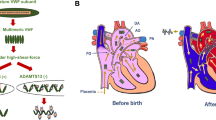Abstract
Replacement therapy with exogenous recombinant factor VIII (rFVIII) to control bleeding episodes results in the development of inhibitory antibodies in 15% to 30% of hemophilia A patients. The inhibitory antibodies are mainly directed against specific and universal immunodominant epitopes located in the C2 domain. Previously we have shown that complexation of O-phospho-L-serine (phosphatidylserine head group) with the phospholipid binding region of the C2 domain can lead to an overall reduction in the immunogenicity of rFVIII. Here, we have investigated the hypothesis that dicaproyl phosphatidylserine, a short-chain water-soluble phospholipid, can reduce the immunogenicity of rFVIII. Circular dichroism and fluorescence spectroscopy studies suggest that dicaproyl phosphatidyl-serine interacts with rFVIII, causing subtle changes in the tertiary and secondary structure of the protein. Sandwich enzyme-linked immunosorbent assay studies indicate that dicaproyl phosphatidylserine probably interacts with the phospholipid binding region of the C2 domain. The immunogenicity of FVIII-dicaproyl phosphatidylserine complexes prepared at concentrations above and below the critical micellar concentrations of the lipid were evaluated in hemophilia A mice. Our results suggest that micellar dicaproyl phosphatidylserine may be useful to reduce the immunogenicity of rFVIII preparations.
Similar content being viewed by others
References
Foster PA, Zimmerman TS. Factor VIII structure and function.Blood Rev. 1989;3:180–191.
Lenting PJ, van Mourik JA, Mertens K. The life cycle of coagulation factor VIII in view of its structure and function.Blood. 1998;92:3983–3996.
Toole JJ, Knopf JL, Wozney JM, et al. Molecular cloning of a cDNA encoding human antihaemophilic factor.Nature. 1984;312:342–347.
Kaufiman RJ, Wasley LC, Dorner AJ. Synthesis, processing, and secretion of recombinant human factor VIII expressed in mammalian cells.J Biol Chem. 1988;263:6352–6362.
Vehar GA, Keyt B, Eaton D, et al. Structure of human factor VIII.Nature. 1984;312:337–342.
Fay PJ. Reconstitution of human factor VIII from isolated subunits.Arch Biochem Biophys. 1988;262:525–531.
Wise RJ, Dorner AJ, Krane M, Pittman DD, Kaufman RJ. The role of von Willebrand factor multimers and propeptide cleavage in binding and stabilization of factor VIII.J Biol Chem. 1991;266:21948–21955.
Weiss HJ, Sussman II, Hoyer LW. Stabilization of factor VIII in plasma by the von Willebrand factor. Studies on posttransfusion and dissociated factor VIII and in patients with von Willebrand's disease.J Clin Invest. 1977;60:390–404.
Kaufiman RJ, Dorner AJ, Fass DN. von Willebrand factor elevates plasma a factor VIII without induction of factor VIII messenger RNA in the liver.Blood. 1999;93:193–197.
Bolton-Maggs PH, Pasi KJ. Haemophilias A and B.Lancet. 2003;361:1801–1809.
Manco-Johnson M. Hemophilia management: optimizing treatment based on patient needs.Curr Opin Pediatr. 2005;17:3–6.
Ananyeva NM, Lacroix-Desmazes S, Hauser CA, et al. Inhibitors in hemophilia A: mechanisms of inhibition, management and perspectives.Blood Coagul Fibrinolysis. 2004;15:109–124.
Oldenburg J, Schroder J, Hermann Brackmann H, Muller-Reible C, Schwaab R, Tuddenham E. Environmental and genetic factors influencing inhibition development.Semin Hematol. 2004;41:82–88.
Saint-Remy JM, Lacroix-Desmazes S, Oldenburg J. Inhibitors in haemophilia: pathophysiology.Haemophilia. 2004;10:146–151.
Roberts HR, Monroe DM, White GC. The use of recombinant factor VIIa in the treatment of bleeding disorders.Blood. 2004;104:3858–3864.
Ingerslev J. Hemophilia. Strategies for the treatment of inhibitor patients.Haematologica. 2000;85:15–20.
Ho AY, Height SE, Smith MP. Immune tolerance therapy for haemophilia.Drugs. 2000;60:547–554.
Gensana M, Altisent C, Aznar JA, et al. Influence of von Willebrand factor on the reactivity of human factor VIII inhibitors with factor VIII.Haemophilia. 2001;7:369–374.
Lollar P, Healey JF, Barrow RT, Parker ET. Factor VIII inhibitors.Adv Exp Med Biol. 2001;489:65–73.
Reding MT, Okita DK, Diethelm-Okita BM, Anderson TA, Conti-Fine BM. Epitope repertoire of human CD4(+) T cells on the A3 domain of coagulation factor VIII.J Thromb Haemost. 2004;2:1385–1394.
Reding MT, Okita DK, Diethelm-Okita BM, Anderson TA, Conti-Fine BM. Human CD4+ T-cell epitope repertoire on the C2 domain of coagulation factor VIII.J Thromb Haemost. 2003;1: 1777–1784.
Pratt KP, Qian J, Ellaban E, et al. Immunodominant T-cell epitopes in the factor VIII C2 domain are located within an inhibitory antibody binding site.Thromb Haemost. 2004;92:522–528.
Raju R, Navaneetham D, Okita D, Diethelm-Okita B, McCormick D, Conti-Fine BM. Epitopes for human CD4+ cells on diphtheria toxin: structural features of sequence segments forming epitopes recognized by most subjects.Eur J Immunol. 1995;25:3207–3214.
Purohit VS, Jr, Ramani K, Jr, Sarkar R, Jr, Kazazian HH, Jr, Balasubramanian SV. Lower inhibitor development in hemophilia A mice following administration of recombinant factor VIII-O-phospho-L-serine complex.J Biol Chem. 2005;280:17593–17600.
Balasubramanian V, Ramanathan M. Glycosaminoglycans alter the conformation of interferon-gamma.Cytokine. 2000;12:466–471.
Hauser H. Short-chain phospholipids as detergents.Biochim Biophys Acta. 2000;1508:164–181.
Derrick TS, Kashi RS, Durrani M, Jhingan A, Middaugh CR. Effect of metal cations on the conformation and inactivation of recombinant human factor VIII.J Pharm Sci. 2004;93:2549–2557.
Ramani K, Purohit V, Middaugh CR, Balasubramanian SV. Aggregation kinetics of recombinant human FVIII (rFVIII).J Pharm Sci. 2005;94:2023–2029.
Bi L, Jr, Lawler AM, Jr, Antonarakis SE, Jr, High KA, Jr, Gearhart JD, Jr, Kazazian HH, Jr. Targeted disruption of the mouse factor VIII gene produces a model of haemophilia A.Nat Genet. 1995;10:119–121.
Qian J, Jr, Borovok M, Jr, Bi L, Jr, Kazazian HH, Jr, Hoyer LW. Inhibitor antibody development and T cell response to human factor VIII in murine hemophilia A.Thromb Haemost. 1999;81:240–244.
Chattopadhyay A, London E. Fluorimetric determination of critical micelle concentration avoiding interference from detergent charge.Anal Biochem. 1984;139:408–412.
Zarif L. Drug delivery by lipid cochleates.Methods Enzymol. 2005;391:314–329.
Ramani K, Balasubramanian SV. Fluorescence properties of Laurdan in cochleate phases.Biochim Biophys Acta. 2003;1618: 67–78.
Zhai X, Srivastava A, Drummond DC, Daleke D, Lentz BR. Phosphatidylserine binding alters the conformation and specifically enhances the cofactor activity of bovine factor Va.Biochemistry. 2002;41:5675–5684.
Ramani K, Purohit VS, Miclea RD, Middaugh CR, Balasubramanian SV. Lipid binding region (2303–2332) is involved in aggregation of recombinanty human FVIII (rFVIII).J Pharm Sci. 2005;94:1288–1299.
Tsai PK, Volkin DB, Dabora JM, et al. Formulation design of acidic fibroblast growth factor.Pharm Res. 1993;10:649–659.
Reipert BM, Ahmad RU, Turecek PL, Schwarz HP. Characterization of antibodies induced by human factor VIII in a murine knockout model of hemophilia A.Thromb Haemost. 2000;84:826–832.
Qian J, Collins M, Sharpe AH, Hoyer LW. Prevention and treatment of factor VIII inhibitors in murine hemophilia A.Blood. 2000;95:1324–1329.
Behrmann M, Pasi J, Saint-Remy JM, Kotitschke R, Kloft M. Von Willebrand factor modulates factor VIII immunogenicity: comparative study of different factor VIII concentrates in a haemophilia A mouse model.Thromb Haemost. 2002;88:221–229.
Author information
Authors and Affiliations
Additional information
Published: May 26, 2006
Rights and permissions
About this article
Cite this article
Purohit, V.S., Balasubramanian, S.V. Interaction of dicaproyl phosphatidylserine with recombinant factor VIII and its impact on immunogenicity. AAPS J 8, 41 (2006). https://doi.org/10.1007/BF02854907
Received:
Accepted:
DOI: https://doi.org/10.1007/BF02854907




